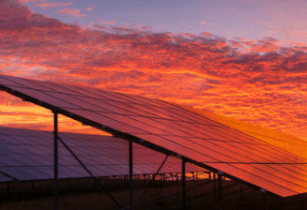Over the next five years, the Middle East and North Africa (MENA) region will need to invest US$209bn in the power sector, according to the MENA Power Investment Outlook 2019-2023 report by The Arab Petroleum Investments Corporation (APICORP)
Between 2019 and 2023, APICORP estimates that investment in the MENA energy sector could reach USD1 trillion, with the power sector accounting for the largest share at 36 per cent, spurred by growing electricity demand and greater momentum for renewable energy.
Dr Leila Benali, chief economist at APICORP, said, “We have observed that a large share of the funding requirements in MENA’s energy sector will go to the power sector, of which renewables account for a substantial share of around 34 per cent.”
“We estimate that MENA power capacity will need to expand by an average of four per cent each year between 2019 and 2023, which corresponds to 88GW by 2023, to meet rising consumption and pent-up demand,” commented Benali.
MENA needs 88GW of generation capacity addition
Governments have been accelerating their investment plans and APICORP estimates that 87GW of capacity additions are already at the execution stage. This is expected to translate into US$142bn for power generation and approximately US$68bn for transmission and distribution.
While the government remains involved at different phases of power projects, even in PPPs, the private sector is critical for risk management due to its track record in performance, technology and cost efficiency that it provides for financing.
Electricity demand growth to slow over the medium term
During the period between 2007 and 2017, electricity consumption in the MENA region increased by 5.6 per cent compound annual growth rate (CAGR) driven by rapid economic growth, industrialisation, rising income levels, high population growth rates and urbanisation, all coupled with low electricity prices.
Outside the GCC, countries have been struggling to keep up with growing demand. In both cases, the trajectory of demand growth meant that the model was unsustainable for governments, and – in a few cases – created suboptimal electricity systems.
Efforts to promote energy efficiency and support the public with smarter and more responsible consumption, whilst tackling infrastructural and regulatory hurdles are equally important. Consequently, APICORP forecasts that over the next five years, electricity demand growth will slow to around 3.8 per cent CAGR.
Renewable energy to account for 34 per cent of power investments in MENA
Around US$350bn could be invested in MENA’s power sector in the next five years, with renewable energy accounting for 34 per cent of power investment or 12 per cent of total energy investment. Renewable energy developments in the Arab world have gained tremendous momentum in recent years, driven primarily by governments that recognise the urgency of tackling rising demand for energy coupled with the declining costs of solar PV.
“Morocco’s target for renewable energy as a share of total generation is ambitious, standing at 42 per cent by 2020. However, across the region, the policy signals, change in business models and investment/credit support required in grids and storage to accompany the introduction of renewables is yet to be seen,” added Benali.
According to APICORP, close to 87GW of generation capacity is under execution, driven by the UAE (19 per cent), followed by Saudi Arabia (17 per cent) and Egypt (16 per cent) respectively.




